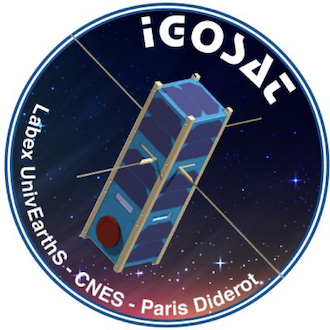IGOSat
 | |
| Partner | Paris Diderot University |
| Launch Date | Late 2020-early 2021 |
| Launch base | Not yet defined |
| Orbit | Sun-synchronous, 650 km |
| Mission lifetime | Indefinite |
IGOSat stands for Ionospheric & Gamma-ray Observations SATellite, the first satellite (a 3U cubesat) built by Paris Diderot University, with support from the Nanolab-Academy project, the APC astroparticle and cosmology laboratory and the IPGP Earth physics institute in Paris. More than 200 students are contributing to this project.
The satellite will be carrying two separate mission payloads:
- A dual-frequency (L1 and L2) GPS receiver to study the electron content of the ionosphere by GPS occultation. This technique has already been used before by satellites to study the atmosphere, but never the ionosphere using one as small as a 3U cubesat.
- A scintillator and silicon photomultiplier (SiPM) to detect gamma rays and electrons over the poles and the South Atlantic Anomaly (SAA), known for their density of high-energy particles.
The teams of students and supervisors hope to ready IGOSat for launch late in 2020.
